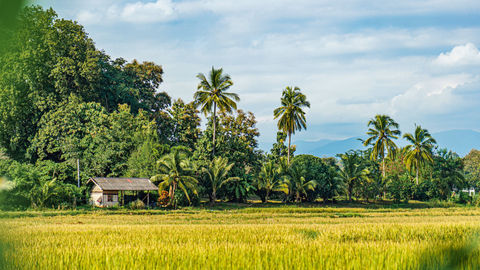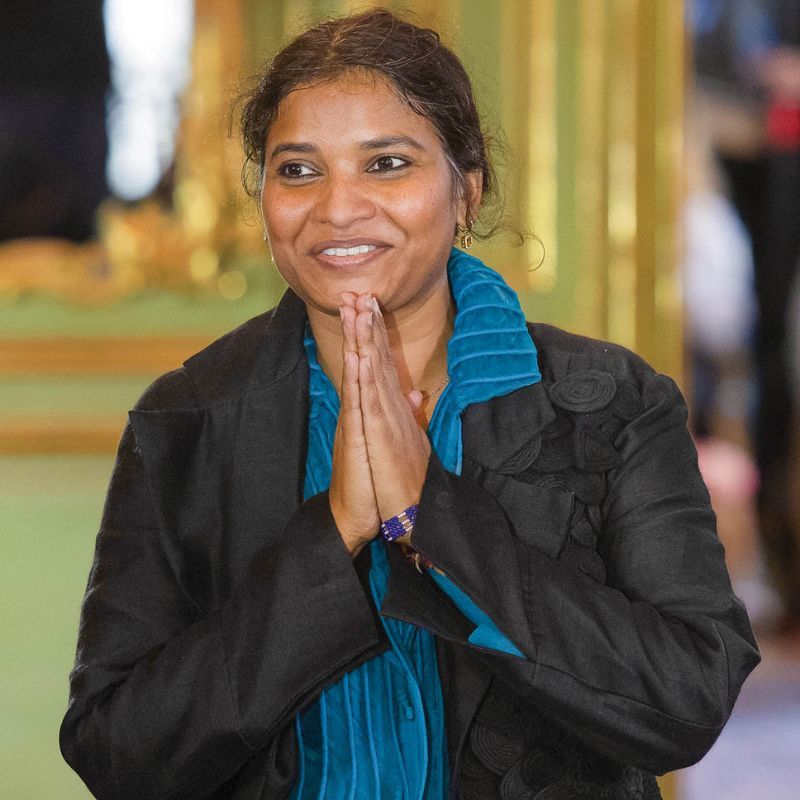
In northern Thailand, Travel + Leisure India & South Asia’s contributor meets and photographs the chocolate makers who are leading the country’s craft-cacao movement. By Chris Schalkx
After almost a decade of eating my way around Thailand, where I moved from the Netherlands in 2013, my tongue is no stranger to the briny bitterness of the curries of the north or the tamarind tang of southern gaeng som, the sour fish soup. It wasn’t until recently, however, that I had my first bite of something I’d not yet tasted in the Thai terroir: chocolate. On a steamy morning last November, I flew from Bangkok to Mae Taeng, a district in the mountains between Chiang Mai and the border with Myanmar, to trace the source of an ingredient that has become a kitchen staple for Bangkok’s top pastry chefs: Kad Kokoa’s single-origin chocolate.

Meet the chocolate makers

Guiding me were Bangkok-born Paniti and Nuttaya Junhasavasdikul, Kad Kokoa’s founders, who are proudly spearheading the country’s burgeoning bean-to-bar movement. The three of us scrambled along the muddy one-kilometre trail to one of the company’s cacao farms (Kad Kokoa operates four farmer co-ops). As we went, Paniti recounted how, in 2017, he and Nuttaya left their successful law careers to carve out a sweeter path in the world of chocolate.

It was a bold move, as Thai cacao was under-appreciated at the time. “Most Thais found our craft chocolate weird,” Nuttaya said. “They were used to the sweet and bitter flavours of the commercial stuff, and ours was too fruity. When we shared our plans to make it, friends told us we were crazy.” But they persevered. Now their chocolate is sold in Japan, Thailand, and the US and has won awards in competitions such as the Asia Pacific International Chocolate Awards and London’s Golden Bean. At the Mae Taeng farm—a tangle of some 800 cacao trees on a hilltop surrounded by coffee groves and birdsong—Paniti cracked open a banana-yellow cacao pod. Inside were rows of seeds covered in a fleshy pulp. After each harvest, the seeds are dried and fermented under banana leaves, then shipped to Kad Kokoa’s chocolate lab in Bangkok’s Sathorn district. A few weeks later, I visited the lab, which hosts workshops and tastings and will soon be joined by a cacaocentric bistro in the Sukhumvit area.
Making Sweet Treats

I watched the seeds being roasted, graded, and crushed into nibs, then mixed with organic sugar—and nothing else. This mixture is then machine-ground for 48 hours until it becomes a velvety paste. Next, the chocolate is tempered, poured into moulds, and cooled. Kad Kokoa uses most of the chocolate in its signature single-origin bars, though some ends up being combined with experimental ingredients such as Chantaburi black pepper or salted tamarind. “Just like in Burgundy, where one Pinot Noir can taste different from the one grown across the road, cacao varies in flavour depending on the soil and weather conditions it’s grown in,” Paniti explained as he handed me a piece of the 70 per cent chocolate from Prachuap Khiri Khan, a province wedged between Myanmar and the Gulf of Thailand.

Swirling each bite around my mouth like a sip of wine, I got a tart hit reminiscent of unripe banana, mellowed by undertones of coconut. The chocolate from the red-soiled farm in Chumphon, a province farther south, tasted richer, with a subtle hint of plum, while the bar from the high-altitude farm we had visited near Chiang Mai was floral and almost honey-like.
After the tasting, Paniti told me that Kad Kokoa’s mission reaches beyond simply making delicious products. Cacao was a cash crop in the 1970s, but after the Western corporations—who were buying the beans—started moving to cheaper locales, many farmers let their trees wither. With Kad Kokoa, the chocolate makers hope to revive the industry by buying from the small-scale farmers still growing cacao on their land. They buy beans at a fair price and bring in specialists to educate the farmers about growing and fermentation methods. “Even though we’re still small,” Paniti said, “we’re building an ecosystem where everyone benefits.” farm tours available by appointment.
GETTING THERE
Thai Airways, Thai Smile, and Air India serve one-stop flights to Chiang Mai Airport. Mae Taeng is a 47-km drive from here.
STAY
Sibsan Resort & Spa Maetaeng offers polished villas and suites featuring wood furnishings. Doubles from INR 7,111.
Related: Exquisite Indulgences: 9 Of The Most Expensive Chocolate Brands In The World










